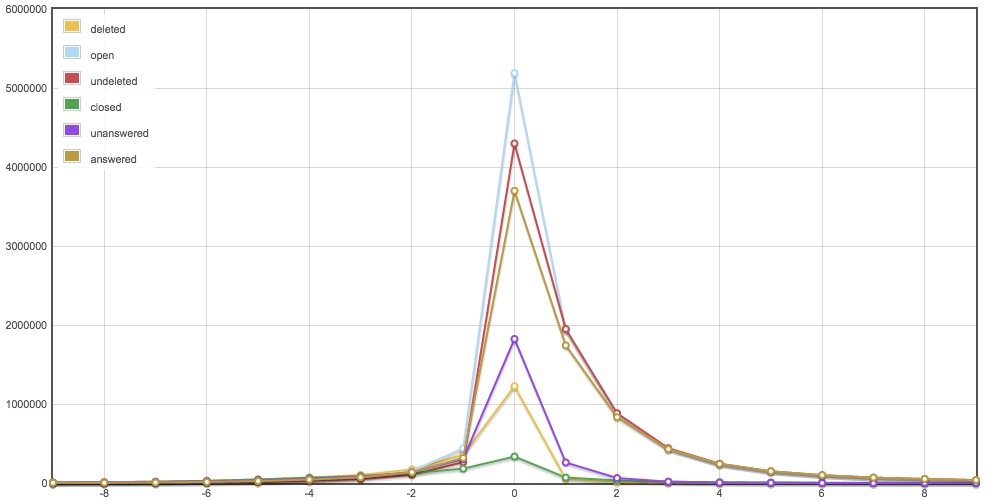The data with deleted posts excludeddata with deleted posts excluded looks a lot worse for closed questions. Even when including deleted posts, answers to open questions don't look much better than those to questions closed within a month. If you are looking for the crap predicted by Sturgeon's revelation, don't look at closed questions alone. Closing requires attention from an uncommon set of users. Crap is mostly found in questions that don't get any votes at all:
Josh Caswell suggested looking at anonymous feedback. It turns out that anyone can analyze this on SEDESEDE by querying the PostFeedback table. Intially, I didn't think it would make any sort of difference, but here are answer averages using anonymous voting scoresanswer averages using anonymous voting scores:
Now the contrast between early and late closes is stark. Anonymous feedback is very sparse and strongly correlated to viewsstrongly correlated to views. Questions closed within a month of asking are just not viewed very often. Questions closed after a month are some of our most-viewed questions. To judge by anonymous feedback, they have some of our most useful answers as well. There aren't many sites that would allow popular pages like these to be put on a path to deletion.
